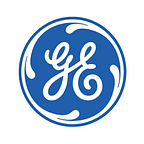A Pathway to Progress
How Dick Tracy inspired a generation of technologists
“The Man has a dream and that’s the start
He follows his dream with mind and heart.
And when it becomes a reality,
It’s a dream come true for you and me.”
This is an excerpt from, “It’s a great big beautiful tomorrow,” by Richard M. and Robert B. Sherman (theme song from the GE Carousel of Progress Exhibit in the GE Pavilion “Progressland,” 1964 New York Worlds Fair).
Have you ever been part of a revolution? No? Well, now we all have a chance. It seems like every generation has something really, really big come along that appears so logical that we wonder why it didn’t get invented sooner. Satellite communications and cell phone networks immediately come to mind. But having the idea isn’t enough to make it so.
I read Dick Tracy when I was young, and like most of my friends, I wanted a wrist-radio just like the character. It was incredible! Of course the technology seemed otherworldly in the 1950's, but it inspired a generation of technologists to think without limits.
Now, in the past 40 years or so, the Internet has rewritten our expectations of what is possible, and our definitions of who we can meet and share ideas with have broadened exponentially. Knowledge and data are becoming ubiquitous, and the access to low cost menus of all-you-can-eat print and audio-visual media is changing how we spend our free time, how we interact in a knowledge economy, and how we ultimately invest in ourselves.
In the last few decades, we have been witness to the connection, in near real-time, of billions of people and the creation of more data, information and knowledge than in all of recorded history. What could possibly be coming next that would make us blink?
As the cost of computing power is driven closer and closer to zero compared to the cost of electrons needed to drive the algorithms, we are beginning to see the slow but unstoppable transfer of intelligence into things that were once considered simple and boring. At first they were curiosities like the rice cooker, with fuzzy logic that always cooked rice to perfection no matter how untrained the chef was at the controls. Then along came the smartphone and people started to really take notice. We now have “smart” thermostats, light bulbs, TV’s, and wearables.
Things that think are the next step in automation that will move us from the mechanical to a more cerebral plane.
Currently, we are in a race to blend digital sensors backed with computing power into everyday objects. It’s exciting, still surprising, and an incredible platform for innovation. Looking back, we realize how the ability to connect millions of devices with sources of electricity via a reliable power network in the 1900's was a true revolution and set us on this current trajectory.
So what is the next logical step in our “Pathway to Progress”?
We are preparing to begin the transformation of some of the most complex machines and industrial systems ever created, namely; aircraft engines, power generation equipment, locomotives, medical equipment — you get the idea. These are the things we depend on every day and every night that make our world run smoothly.
We are about to infuse these collections of amazing machines with real intelligence and insight that will create a hyper-connected network of incredible value and potential to improve productivity, efficiency and creativity at a scale never before seen. Recent estimates suggest that upwards of 50 -75 billion objects will be connected to this network over the next 10–20 years.
Can you imagine when the physical world really starts to evolve at the speed of software and computing power?
I mean not just the objects, but the systems of how we get things done, how we operate the basic infrastructure of our world, how we light up the cities, manage the traffic, deliver healthcare, and how we move trillions of dollars worth of goods and transport millions of people every day.
Now I dream of a time when all these computer-enabled things will be able to talk to each other and get along while sharing information, anticipating problems and solving them before we notice — maybe even teaching us a thing or two in the process. I am doing my best to get things off to a good start by working with some colleagues who share this vision and want to build an Internet where industrial strength objects can interact safely and efficiently for everyone’s benefit. We are calling it the “Industrial Internet.”
We just formed a consortium to talk about what we can achieve if we all work together and intelligent complex machines can talk with us and each other. No “Tower of Babel” (or should I say babble) allowed. Of course there are skeptics, but that’s natural and healthy. All I want is the industrial equivalent of Dick Tracy’s watch with some state-of-the-art capabilities. To start, let’s say real-time data analysis and connectivity to every industrial piece of equipment linked to a robust and secure communication network, easy to use and pervasively connected around the globe. In a few years, I hope it will seem so obvious that we wonder why it didn’t happen sooner! That’s what we are calling the “Industrial Internet” and we think it might just start the next “Industrial Revolution.”
Joe Salvo is also the Manager of the Complex Systems Engineering Laboratory that builds systems based on advanced associative memory and computing technology.
This article is a part of GE’s “What’s Next” collection that gathers perspectives from the makers of tomorrow. Do you have a vision for the future? Tweet @generalelectric for the opportunity to collaborate on “What’s Next.”
